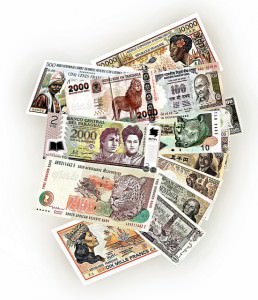Introduction to Trading in the World’s Largest Market
Trading in the Forex market offers a number of clear advantages and is becoming increasingly open to the average trader
By: Sara Mackey, Contributing Writer
What is the largest financial market in the world? The response most people would offer to this question is the stock market. The stock market, however, is not the correct answer. In fact, the correct answer not the stock market, bond market, nor the commodities markets. The largest financial market in the world is the foreign exchange market.To put into perspective just how gigantic the fx market is, think about this: if you were to add up the daily volume of every major stock exchange in the world—the New York Stock Exchange, the London Stock Exchange, the Frankfurt Stock Exchange, and the Tokyo Stock Exchange—the total still falls far short of the average daily volume that is transacted in the fx market.
What Exactly Is The FX Market?
Most people have traded in the fx market, even if they were largely unaware of it. Every time a person exchanges one currency for another, he or she is engaged in trading in the fx market. The foreign exchange market is where currencies, such as the U.S. dollar, euro, Japanese yen, Swiss franc, and Australian dollar, are traded and exchanged against one another every day.
Any time one currency is exchanged for another, an fx trade has occurred. Tourists exchanging one currency for another as they travel between countries, however, accounts for a very small percentage of daily turnover in the fx market. The bulk of daily volume in the fx market is executed by investment banks, hedge funds, wealthy private investors, central banks, and large multi-national corporations.
In fact, until the early 2000’s, these were the only players involved in the fx market due to very large minimum contract sizes, often fixed at $1 million or more. This high minimum contract size made it impossible for the average investor to gain access to the fx market. But the explosion of the internet and technological advancements in the early 2000’s allowed small retail fx brokers to open shop and provide minimum contract sizes as little as $1,000, and 50:1 leverage, which means that investors could open accounts for as little as a few hundred dollars.
The retail fx market has grown substantially over the last 10 years due to significant advantages that the fx market provides traders.
High Leverage
In the stock market, the most investors can typically leverage is 2:1. In futures, traders can gain a bit more leverage, but nothing near the 50:1 that is currently available to U.S. traders and the over 100:1 leverage that is available to most European and Australian brokers.
Low Transaction Costs
In stock trading, commissions can eat up all the profits one makes in a year. In fx, the total cost of execution tends to be much lower than that of the stock and futures markets. This is a major advantage for serious traders and investors.
24 Hour Market
The fx market is not a centralized exchange, such as stock and futures markets. Instead, the market is simply a loosely connected network of interbank dealers spread around every major financial center in the world, includingNew York,Tokyo, andLondon. Therefore, there is no clean open and close each day. Instead, liquidity and volatility ebb and flow as financial centers open and close around the world each day. This is very advantageous because traders do not have to worry about opening and closing gaps adding significant risk to overnight positions.
The fx market is the largest financial marketplace in the world, and it is only set to continue to grow over the next decade as our continuing globalized economy places increased demand on the need to exchange currencies.
Sources:
ARB Team
Arbitrage Magazine
Business News with BITE.
Liked this article? Hated it? Comment below and share your opinions with other ARB readers!






























Share the post "Introduction to Trading in the World’s Largest Market"